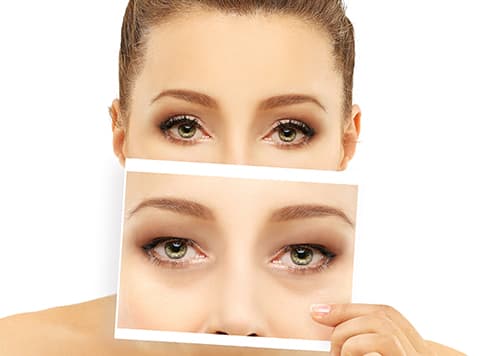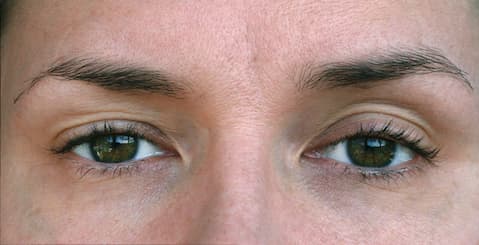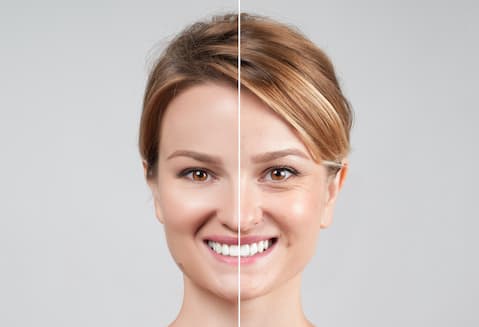Cosmetic Procedures
Although some ophthalmology patients would not expect to see a plastic surgeon on staff, we at HVES know that some eye abnormalities would benefit from an Oculoplastic Surgeon’s touch.

An Oculoplastic Surgeon is an ophthalmologist who has completed rigorous additional training in plastic and reconstructive surgical techniques as it relates to the eye and surrounding structures. Therefore, disorders involving the eyelids, thyroid eye disease, ocular trauma, malfunctioning tear ducts, the presence of skin cancers around the eyelid, and the affected adjacent facial structure can all be addressed and repaired by an Oculoplastic Surgeon who is familiar with the ocular region.
Fortunately, if you are looking for non-surgical options to minimize the wrinkles associated with aging, Botox® Cosmetic and Restylane® may be the answer you’re looking for.
The two most commonly performed upper eyelid surgeries are blepharoplasty and ptosis repair.
Blepharoplasty
Eyelid surgery, known as Blepharoplasty, is a surgery which removes excess skin and fat from the upper eyelids, a condition called dermatochalasis. Patients with dermatochalasis may complain that their eyelid skin folds make their eyes look tired or smaller or that it interferes with their vision. Surgery is performed by making external incisions along the natural skin lines of the eyelids, such as the creases of the upper lids and below the lashes of the lower lids, or from the inside surface of the lower eyelid. These techniques allow for proper repositioning of the eyelids while hiding any evidence of a surgical procedure.

Blepharoplasty may be covered by insurance if the skin folds are causing direct obstruction of central vision.
Ptosis
Ptosis repair is a surgery which corrects drooping of the eyelid itself (ptosis), as opposed to heaviness of the skin.
Ptosis repair raises the eyelid by adjusting the connection between the eyelid and the muscle that lifts it (levator palpebrae superioris, or levator for short).
Patients with ptosis complain of obstructed or hooded vision or fatigue in their eyelids. An incision is made either in the eyelid skin crease or on the undersurface of the eyelid, depending on the type and degree of ptosis. Through this incision, the levator muscle is reattached to the eyelid. In most patients, the surgery simply recreates the same connection that used to exist before gravity and age stretched it.

Ptosis repair is usually covered by insurance because the eyelids are directly obstructing vision.
Botox®
Botox®, a non-surgical cosmetic product, is used to relax the muscles of the face that cause “dynamic wrinkles” which are the result of repetitive muscle movements. Botox® works great for treating the “11” lines between the eyebrows “crows feet” or “smile lines” and deep forehead lines caused by raising eyebrows. Botox® is injected into specific target muscles to limit their movement and thereby soften the lines. It is the experience that ophthalmologists, particularly oculoplastic surgeons, have with these complex muscles that sets them apart from others that administer Botox®. Botox® has also been proven to be effective in the treatment of neurological conditions such as blepharospasm.

Restylane®
Restylane® is a clear, biodegradable gel that has been successfully used worldwide since 1996. Since it is similar to the hyaluronic acid your skin naturally produces, it can be injected into wrinkles and folds on your face, temporarily filling in that space. In the United States, the Food and Drug Administration (FDA) approved the use of Restylane® in 2003 to treat facial wrinkles.

